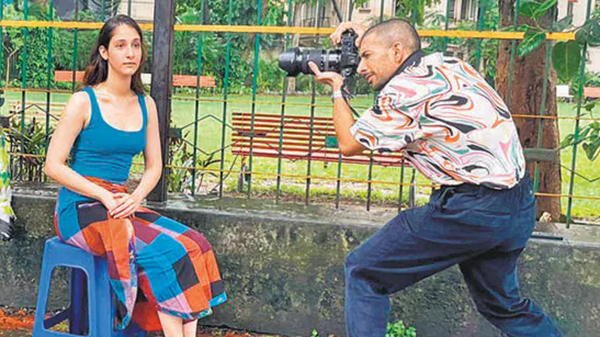Vimadalal’s project took shape during a chat in March about Parsi noses with his husband, stylist Prayag Menon, and a friend
The Parsi nose or the Persian nose, often described as large, with a prominent dorsal hump, is emblematic of the community (HT Photo)
Article By Murali K Menon | Hindustan Times
Until about five years ago, Gulnaz Siganporia didn’t get along too well with her nose. She always wanted a small nose, symmetrical and elegant, like the people she followed on social media had. She often wished she had taken after her mother Jasmin, who has, she says, a cute, small nose. “My dad has the exact same nose I have,” she said.
But, in the last three to four years, something has changed, she says. She thinks her nose fits her face. “I think I outgrew that phase and learnt to look at it differently. It’s a part of me; I’ve made my peace with it,” said the 28-year-old, who is a producer at a digital agency. In fact, she is so at ease with it that she volunteered to be a participant in fashion photographer Porus Vimadalal’s ‘The Parsi Nose Project’, which documents “interesting noses” in the community. Last evening, by the Panchgani Park at Five Gardens, in Dadar, Siganporia didn’t let the intermittent drizzle affect her poise, as she offered up her profile to Vimadalal’s Fuji FX camera.
Vimadalal’s project took shape during a chat in March about Parsi noses with his husband, stylist Prayag Menon, and a friend. “Parsi noses are very distinctive; it’s often like the ultimate give-away. It’s quite really an important marker of who are. We were thinking of doing a few personal photo projects and this one fit right in,” said Vimadalal. Both Vimadalal and Menon wanted the project to also have a broader purpose.
“We see it as a great way to contribute to the community. We all know how Parsis are often distinguished by their noses. But besides identity, we also hope it will start a conversation about self-image. We want it to be inclusive…we got queries from people about whether they would qualify if only one of their parents was Parsi and we said, ‘Of course!’” said Menon.
The Parsi nose or the Persian nose, often described as large, with a prominent dorsal hump, is emblematic of the community. Writers have drawn readers’ attention to it; cartoonists have enjoyed exaggerating its proportions; and most Parsis themselves are known to take potshots at their own proboscises. As far as stereotypes go, it is an inoffensive one.
The rest of India has sweet noses, the Parsis’ prominent ones mark them out, said senior journalist Bachi Karkaria. “And we are aware of it. Look at Sam Manekshaw; he had such a distinguished nose. It is said that once during an altercation with Indira Gandhi after the 1971 war, he reportedly told her, ‘You have a long nose, so have I. But I don’t poke my nose into other people’s affairs’,” said Karkaria.
In less than a month since they first spread the word on social media, Vimadalal has photographed about 10 subjects, mostly during weekends. People have responded from across the world, including Karachi, he said. “Some of them, especially the elderly, have sent us photos of theirs, which I find cute. Others have written in saying they find the idea tremendously empowering,” said Vimadalal. These include furniture designer Aazin Printer who, while growing up, gave up singing for his band and found refuge behind the camera as a cinematographer. “I was very conscious. I hated being in front of the camera or on a stage. But I’m at peace with my nose now. My mother passed away when I was 16. I had her nose and I have learnt to accept it,” said Printer. Vimadalal and Menon said their eventual aspiration is to turn the project into a coffee table book. Some portraits are also scheduled to be exhibited at Chemould Prescott Road, in Mumbai, later this year.
If some of their subjects find ‘The Parsi Nose Project’ empowering, others find it fun. At Godrej Baug, on Nepean Sea Road, a bunch of residents — from corporate executive Rustom Sethna, who said he has never paid too much attention to his nose in all his 60 years, to counsellor Parinaz Aga, who actually loves her nose — has volunteered to get their portraits done.
“I have always loved my Parsi nose, though there were good-natured digs at it when I was a teenager — you know, a Natraj pencil could fit inside your nostril, they would say,” said Aga who so loved the idea that she also got her husband to participate in it. “Darayus has a unique nose. I think I married him because of his nose,” she said.

